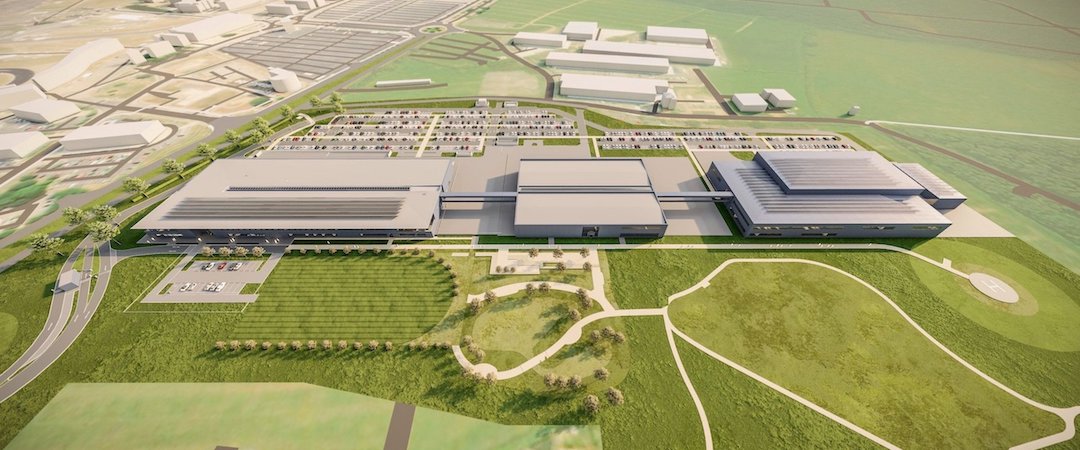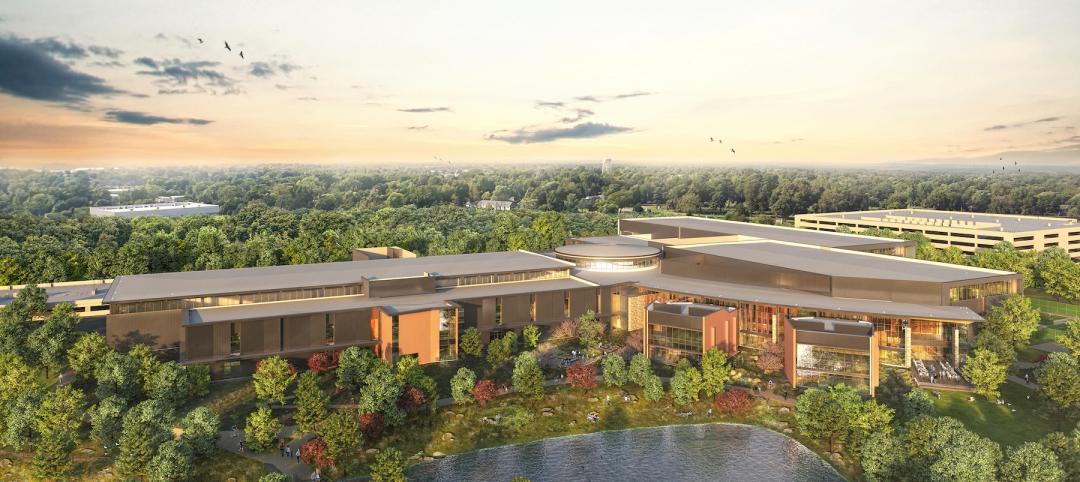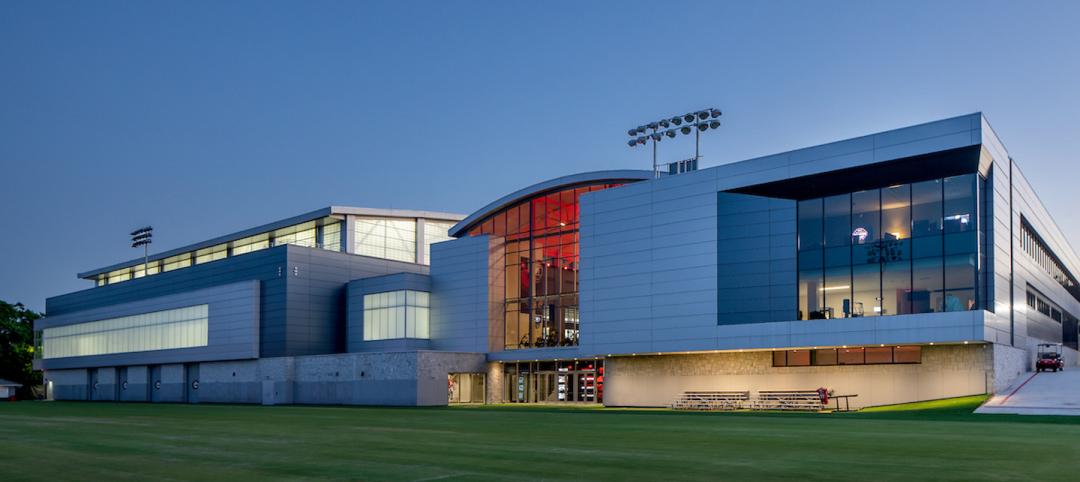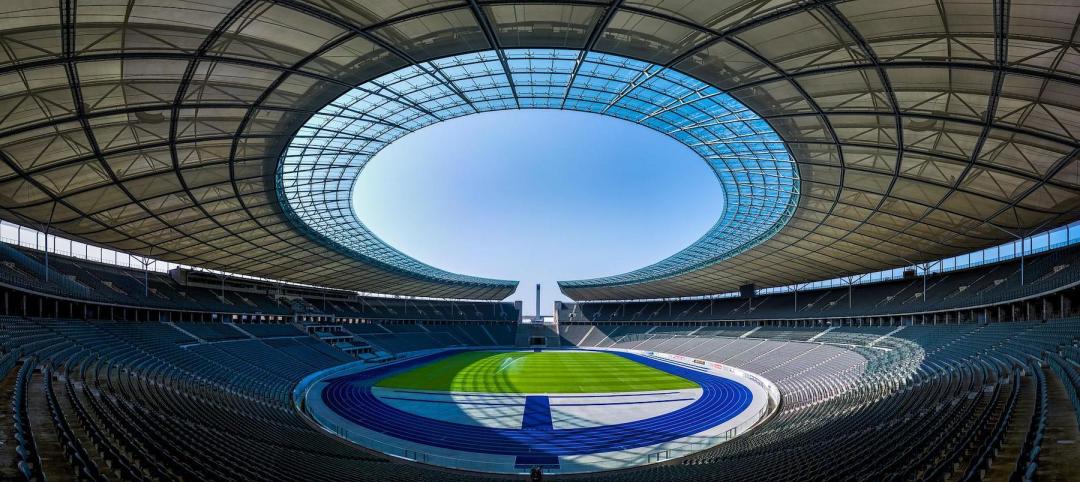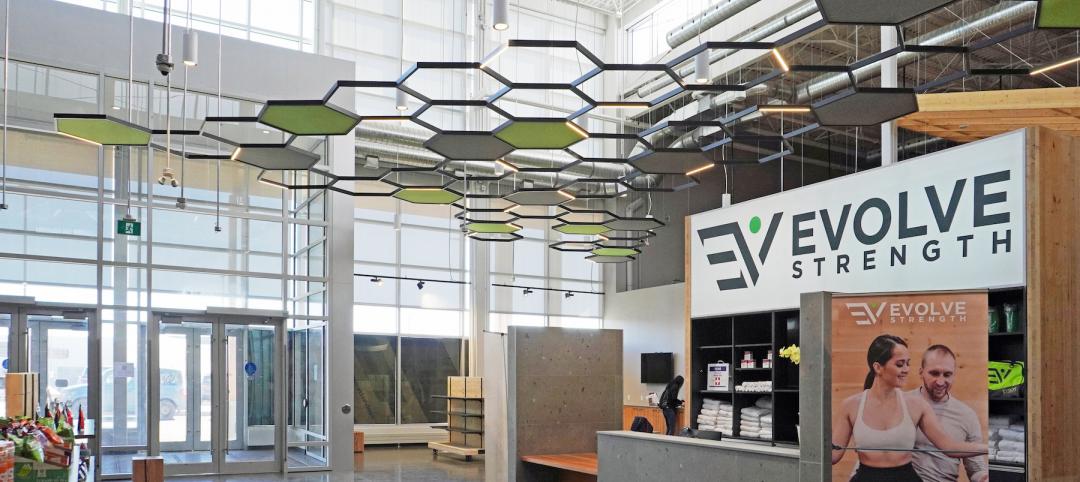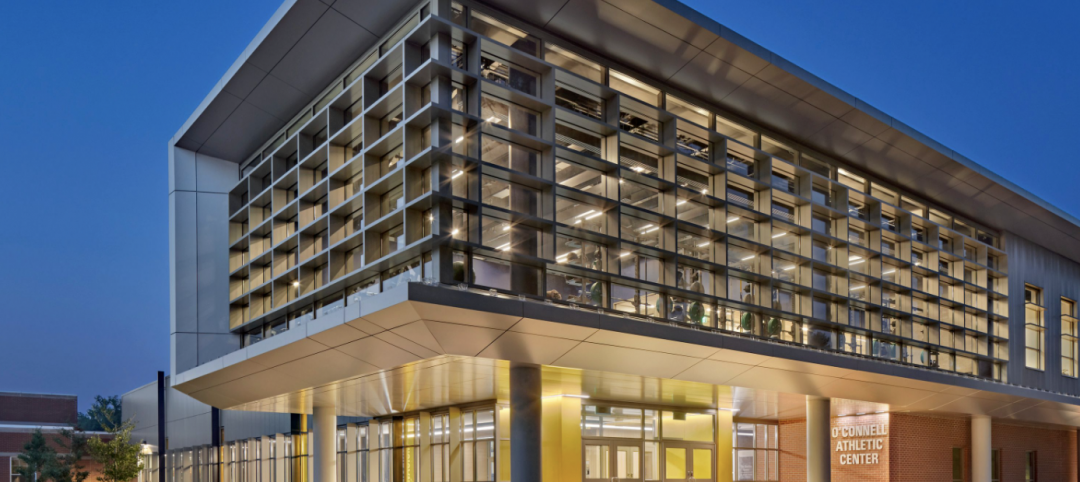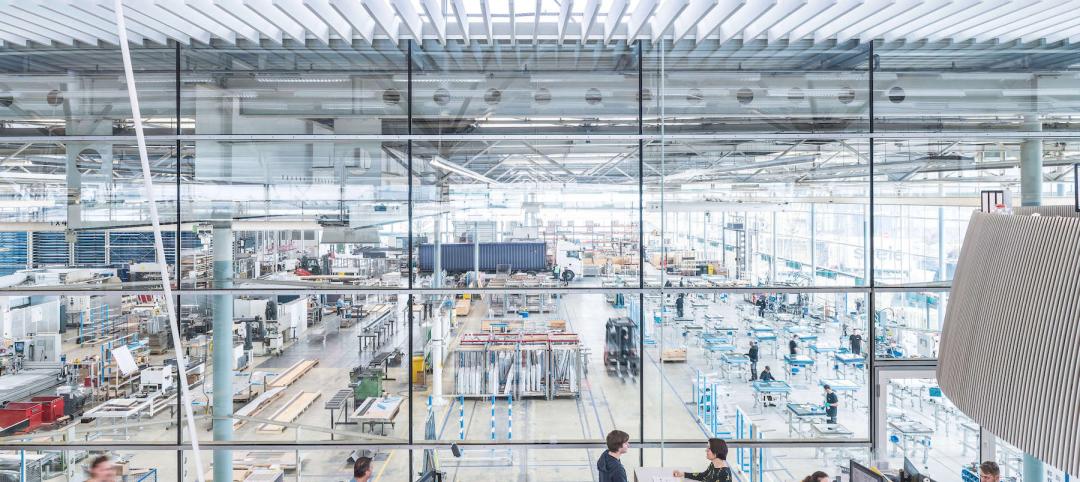The Aston Martin Cognizant Formula One Team has recently broken ground on a new headquarters in Northamptonshire, England. The project, which represents the first all-new F1 factory in the UK since the McLaren Technology Centre opened in 2004, is being designed by Ridge and Partners LLP.
The project will span 400,000 sf across multiple buildings, including a factory and a wind tunnel. The three-unit factory will be built just across the street from the Silverstone Grand Prix Circuit. One building will house the team’s design, manufacturing and marketing resource; a second building will be occupied by the new wind tunnel; and the third will redevelop and repurpose the existing factory premises as a central hub with staff amenities and a logistics center. The new headquarters will house every manufacturing resource within a single campus for the first time in Aston Martin’s history.
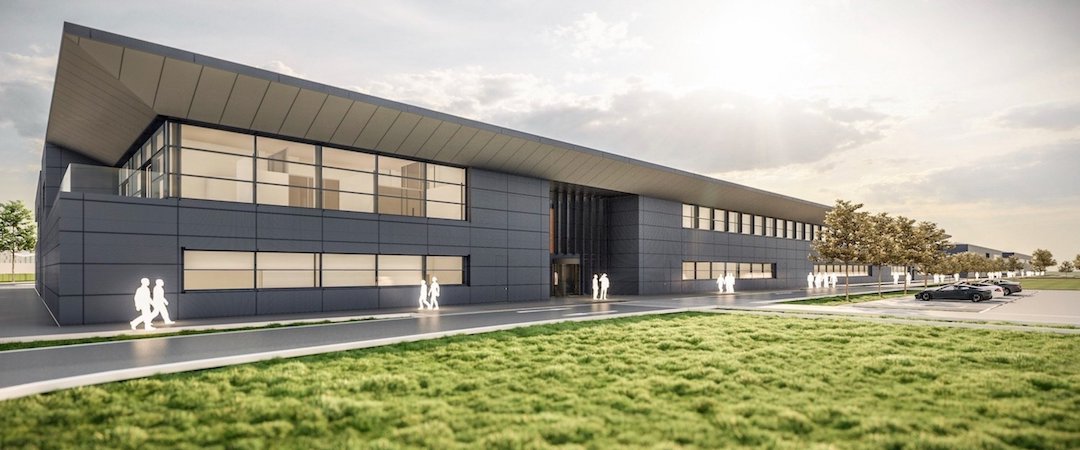
The new wind tunnel will use the latest steel-belt rolling-road system and a state-of-the-art flow-imaging section area. The site will incorporate the wind tunnel, model support, and production facilities. The commissioning of the wind tunnel is due to start in Q3 2023.
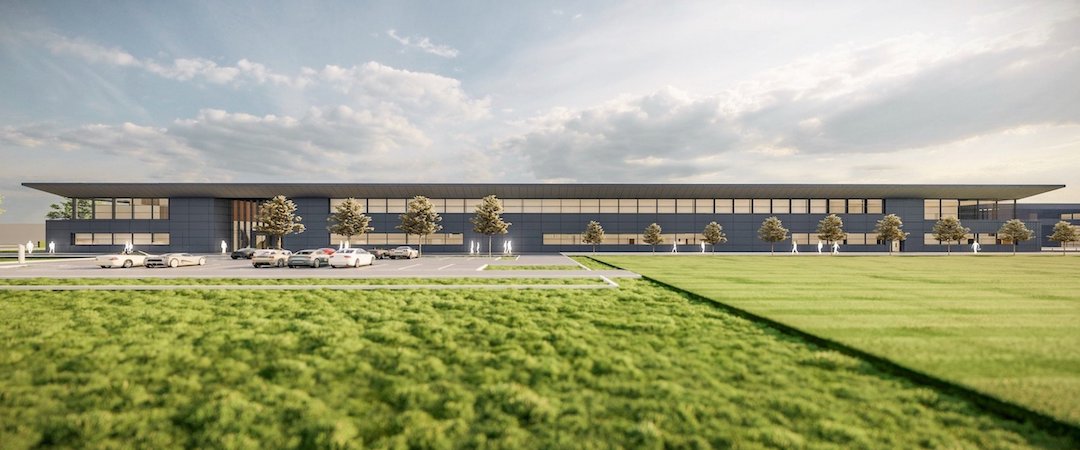
The project also claims to be the first “smart factory” in Formula One. It has been designed from the ground-up to be a wireless, adaptive, streamlined facility with all of its information streams, monitoring systems, and manufacturing processes tied together via data in the cloud. The technology will give the headquarters the ability to constantly adapt to the cyclical manufacturing processes of a Formula One team.
The new headquarters is slated for completion in late 2022 or early 2023.
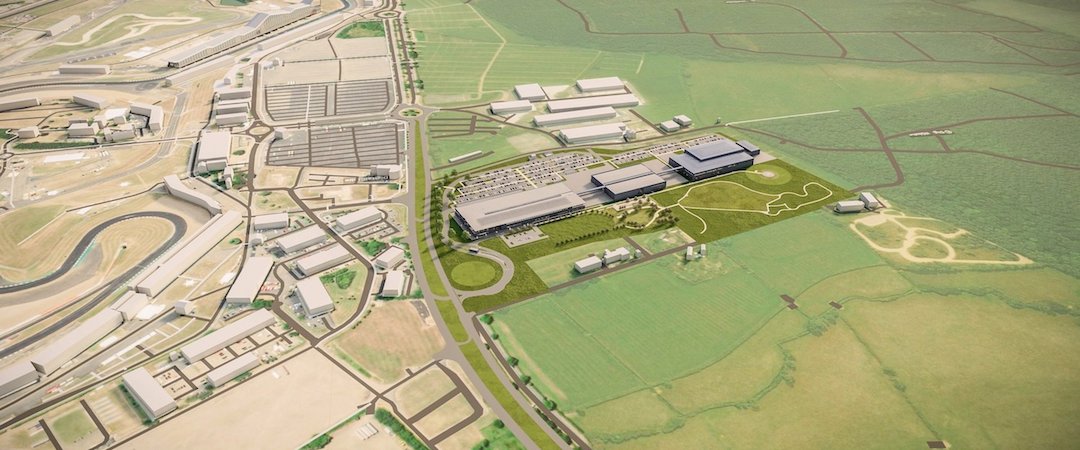
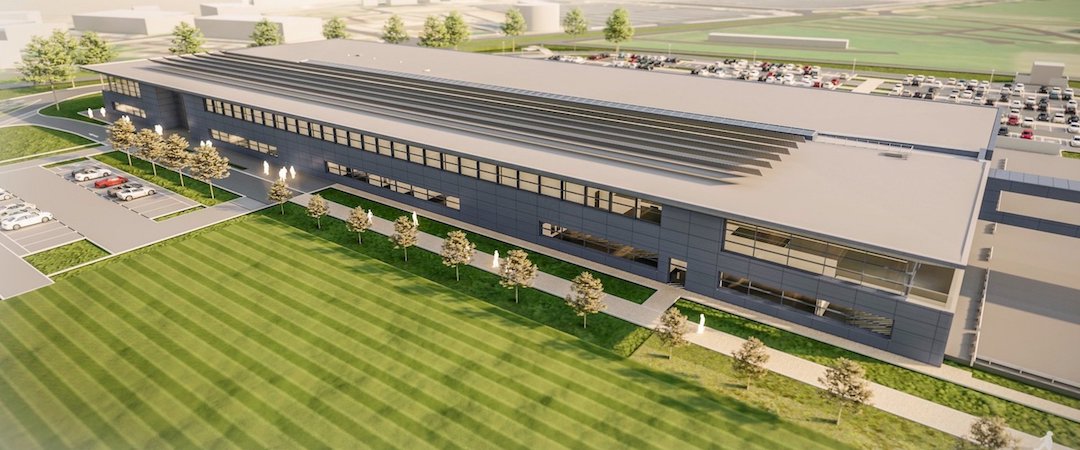
Related Stories
Multifamily Housing | Aug 3, 2022
7 tips for designing fitness studios in multifamily housing developments
Cortland’s Karl Smith, aka “Dr Fitness,” offers advice on how to design and operate new and renovated gyms in apartment communities.
Reconstruction & Renovation | Aug 3, 2022
Chicago proposes three options for Soldier Field renovation including domed stadium
The City of Chicago recently announced design concepts for renovations to Soldier Field, the home of the NFL’s Chicago Bears.
Headquarters | Jun 21, 2022
Walmart combines fitness and wellness in associates’ center that’s part of its new Home Office plan
Duda | Paine’s design leads visitors on a “journey.”
Sports and Recreational Facilities | Jun 17, 2022
U. of Georgia football facility expansion provides three floors for high-performance training
A major expansion of the University of Georgia’s football training facility has been completed.
Building Team | Jun 14, 2022
Thinking beyond the stadium: the future of district development
Traditional sports and entertainment venues are fading as teams and entertainment entities strive to move toward more diversified entertainment districts.
Acoustic Panels | Jun 9, 2022
A fitness center renovation in Calgary focuses on tamping the building’s sound and vibration
Bold Interior Design chose as its solution a lighting/acoustical panel combination.
Sports and Recreational Facilities | May 26, 2022
WNBA practice facility will offer training opportunities for female athletes and youth
The Seattle Storm’s Center for Basketball Performance will feature amenities for community youth, including basketball courts, a nutrition center, and strength and conditioning training spaces.
Sports and Recreational Facilities | May 19, 2022
Northern Arizona University opens a new training center for its student athletes
In Flagstaff, Ariz. Northern Arizona University (NAU) has opened its new Student-Athlete High Performance Center.
University Buildings | May 9, 2022
An athletic center accentuates a college’s transformation
Modern design and a student health center distinguish the new addition at The University of Saint Joseph in Connecticut.
Sponsored | BD+C University Course | May 3, 2022
For glass openings, how big is too big?
Advances in glazing materials and glass building systems offer a seemingly unlimited horizon for not only glass performance, but also for the size and extent of these light, transparent forms. Both for enclosures and for indoor environments, novel products and assemblies allow for more glass and less opaque structure—often in places that previously limited their use.


